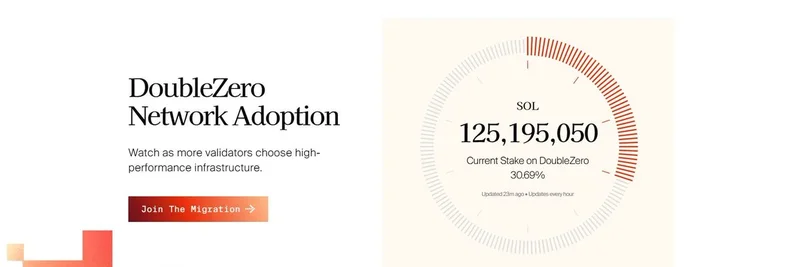In a recent tweet that's buzzing in the crypto community, @degenbams shines a spotlight on Austin Federa, calling him one of those rare builders who gets both the big picture and the nitty-gritty details of blockchain tech. Federa, formerly the head of strategy at the Solana Foundation, played a key role in turning Solana into a DeFi powerhouse. Now, as co-founder of DoubleZero, he's tackling the infrastructure side, building a high-performance network that connects over 400 validators worldwide.
DoubleZero isn't just another altcoin—it's the backbone that makes blockchains run smoother. Think of it as upgrading from a bumpy dirt road to a super-fast highway. By routing data through private fiber optics and optimized relays, it slashes latency, speeds up block propagation, and cuts down on missed slots. This means better performance for major chains like Solana ($SOL), Ethereum ($ETH), and Arbitrum ($ARB). For those new to the terms, latency is basically the delay in data transmission, and block propagation is how quickly new blocks spread across the network—both critical for keeping blockchains efficient and decentralized.
The native token, $2Z, is at the heart of it all. With a fixed supply of 10 billion tokens, $2Z handles payments, staking, and rewards within the ecosystem. Validators who've jumped on board report up to 80% improvements in latency compared to standard internet routes. It's a decentralized physical infrastructure network (DePIN), meaning it incentivizes people to contribute underutilized fiber links, creating a global mesh that's protocol-agnostic—works with any blockchain.
Federa's journey from shaping Solana's narrative to co-founding DoubleZero shows his deep understanding of what blockchains need to scale. He's joined by heavy hitters like the Firedancer team from Jump Crypto, who built Solana's fastest validator client, and experts from Malbec Labs in high-frequency trading and telecom. Together, they're addressing a core bottleneck: the public internet's limitations, like congestion and spam, which slow down even the best blockchains.
Why DoubleZero Matters for Meme Tokens and Beyond
For meme token enthusiasts on Solana, where fast transactions are key to riding hype waves, DoubleZero could be a game-changer. Lower latency means quicker trades, fewer failed transactions during pumps, and overall better user experience. It's not just for big players—by reducing hardware needs through shared spam filtration and offloaded computations, it makes validating more accessible, promoting true decentralization.
The project's two-ring architecture is clever: an outer ring filters out spam using hardware like FPGAs (field-programmable gate arrays, basically customizable chips for super-fast processing), and an inner ring handles the high-speed data flow over private bandwidth. Rewards are distributed via Proof of Utility, based on actual contributions, ensuring fairness.
Community Reactions and Future Outlook
The tweet thread has sparked discussions, with replies praising the shift to private fiber over generic internet routing. One user noted how it could scale Ethereum too, while others highlighted the quiet network reshaping from performance boosts. As DoubleZero gains traction—already live on mainnet-beta—it's drawing investments from firms like Galaxy and support from validators like Luganodes.
If you're a blockchain practitioner looking to stay ahead, follow Austin Federa (@Austin_Federa) and the DoubleZero team members mentioned, like @martypartymusic and @yrschrade. Dive into their documentation or check out how to contribute bandwidth. With $2Z powering this high-performance future, DoubleZero is set to make blockchain infrastructure faster, cheaper, and more reliable.



